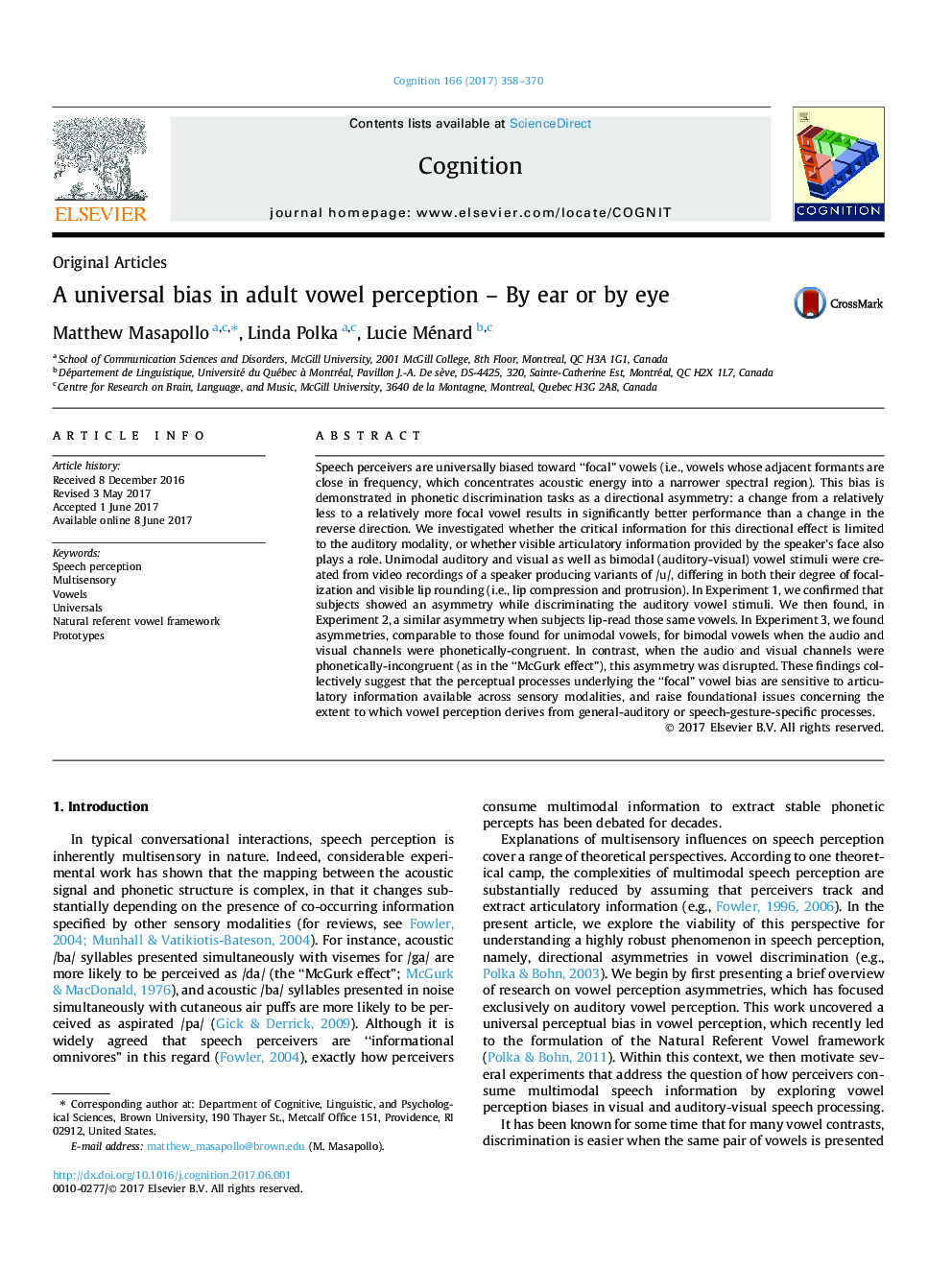| Article ID | Journal | Published Year | Pages | File Type |
|---|---|---|---|---|
| 5041563 | Cognition | 2017 | 13 Pages |
â¢Adults' discrimination of naturally spoken /u/ vowels is asymmetric.â¢Adults display a bias favoring focal vowels, supporting the NRV framework.â¢This bias emerges when discriminating visual and audiovisual /u/ vowel stimuli.â¢This bias was altered when discriminating incongruent audiovisual vowel stimuli.â¢The NRV bias appears to be phonetic and fundamentally multisensory in nature.
Speech perceivers are universally biased toward “focal” vowels (i.e., vowels whose adjacent formants are close in frequency, which concentrates acoustic energy into a narrower spectral region). This bias is demonstrated in phonetic discrimination tasks as a directional asymmetry: a change from a relatively less to a relatively more focal vowel results in significantly better performance than a change in the reverse direction. We investigated whether the critical information for this directional effect is limited to the auditory modality, or whether visible articulatory information provided by the speaker's face also plays a role. Unimodal auditory and visual as well as bimodal (auditory-visual) vowel stimuli were created from video recordings of a speaker producing variants of /u/, differing in both their degree of focalization and visible lip rounding (i.e., lip compression and protrusion). In Experiment 1, we confirmed that subjects showed an asymmetry while discriminating the auditory vowel stimuli. We then found, in Experiment 2, a similar asymmetry when subjects lip-read those same vowels. In Experiment 3, we found asymmetries, comparable to those found for unimodal vowels, for bimodal vowels when the audio and visual channels were phonetically-congruent. In contrast, when the audio and visual channels were phonetically-incongruent (as in the “McGurk effect”), this asymmetry was disrupted. These findings collectively suggest that the perceptual processes underlying the “focal” vowel bias are sensitive to articulatory information available across sensory modalities, and raise foundational issues concerning the extent to which vowel perception derives from general-auditory or speech-gesture-specific processes.
